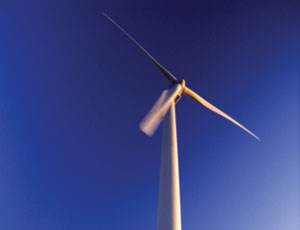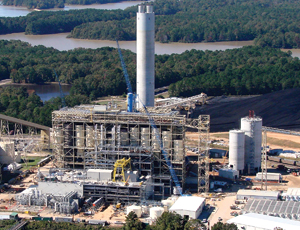Although the power market has taken a hit over the past year, not all the news is bad. The Obama administration’s stimulus plan encourages the development of renewable resources and the rebuilding, expansion and modernization of the nation’s power-delivery network.


Coal-fired plants face permit obstacles.
But the market for coal-fired power plants has been hurt badly by the increasing likelihood of a federal carbon law, and questions remain about how many new nuclear units will actually be built. At the same time, the continuing credit crunch has slowed to a crawl development of independent power plants.
“Is the power market like it was last year? No,” says Tim Gelbar, president of AMEC’s Power and Process Americas subsidiary in Atlanta. “But if you compare it to what’s going on in the rest of the economy, the power market is doing OK. There is work out there. We are pretty fortunate.”
Gelbar says most of the projects currently being designed and built are natural-gas-fired power plants, including simple-cycle peaking units and combined-cycle facilities that will operate more frequently. However, he notes that fewer gas-fired projects are under way than AMEC and others had been expecting. The recession has slowed growth in projected electricity demand, allowing utilities to delay projects.
Albert Ferrer, vice president of power consulting at Oradell, N.J.-based Burns & Roe, agrees. “We had been anticipating a huge boom in simple-cycle combustion turbine projects this year and next, but it hasn’t been happening” because of the lull in load growth, he says.
Engineering, procurement and construction contracts for gas-related projects are being signed. David Dunning, president of Irving, Texas-based Fluor Corp.’s power group, notes that his firm has been building a second 620-MW combined-cycle plant for the Brazos Electric Power Cooperative at the co-op’s Jack County, Texas, station and is just starting work on a 580-MW combined cycle plant for Dominion Virginia Power in Buckingham County, Va.
Projects Deferred
Fluor also is building two 800-MW, supercritical pulverized lignite-fired units at Luminant Energy’s Oak Grove station in Robertson County, Texas—again under an EPC contract—Dunning says. But coal’s stature as a fuel source seems to be falling in the Obama administration, and Dunning is concerned about the inability of new coal-, lignite and petroleum-coke-fired projects to advance.“The problem is that [utilities and independent power companies] can’t get permits for them,” and those that do secure permits face litigation-related delays, he says.
For example, Fluor announced more than a year ago that it had been selected to design and build the Desert Rock project, a two-unit, 1,500-MW supercritical pulverized-coal station planned for a site near Farmington, N.M., by the Navajo Nation’s Dine Power Authority and New York-based Sithe Global Power, Denning says. But the project’s air permit remains in limbo. The U.S. Environmental Protection Agency, which initially issued a permit in July 2008, revoked the permit in January of this year to consider the project’s potential to contribute to global warming.
Even projects that have their approvals in hand are not sure things. In May, the Louisiana Public Service Commission (PSC) approved Entergy Louisiana’s request to suspend for at least three years the utility’s $1.76-billion Little Gypsy project, which called for converting a gas-fired peaking plant in Montz, La., to a 535-MW petroleum-coke and coal-fired facility.
Entergy, which had secured the PSC’s approval to undertake the project in November 2007 and an air permit in February, cited three primary reasons for the suspension: a drop in short and long-term gas prices, which negatively affected the project’s economics; the likely implementation of new federal energy policies, including a carbon-dioxide cap-and-trade plan and a renewable portfolio standard; and “the uncertainties caused by the recent financial crisis and its effects on the U.S. and global economies.”
The Little Gypsy project, which was being built by Baton Rouge, La.,-based Shaw Group, had been expected to come online in 2013. The recently approved suspension pushes the project’s commercial operation date to 2016 at the earliest.
“We hope that Entergy will move forward with the project,” albeit under a delayed schedule, says Jeff Merrifield, senior vice president of Shaw’s power group.
Utilities and independent power companies in general “have taken a little bit of a pause” in the development of a variety of coal-fired projects, Merrifield says. They are waiting for the answers to two…





